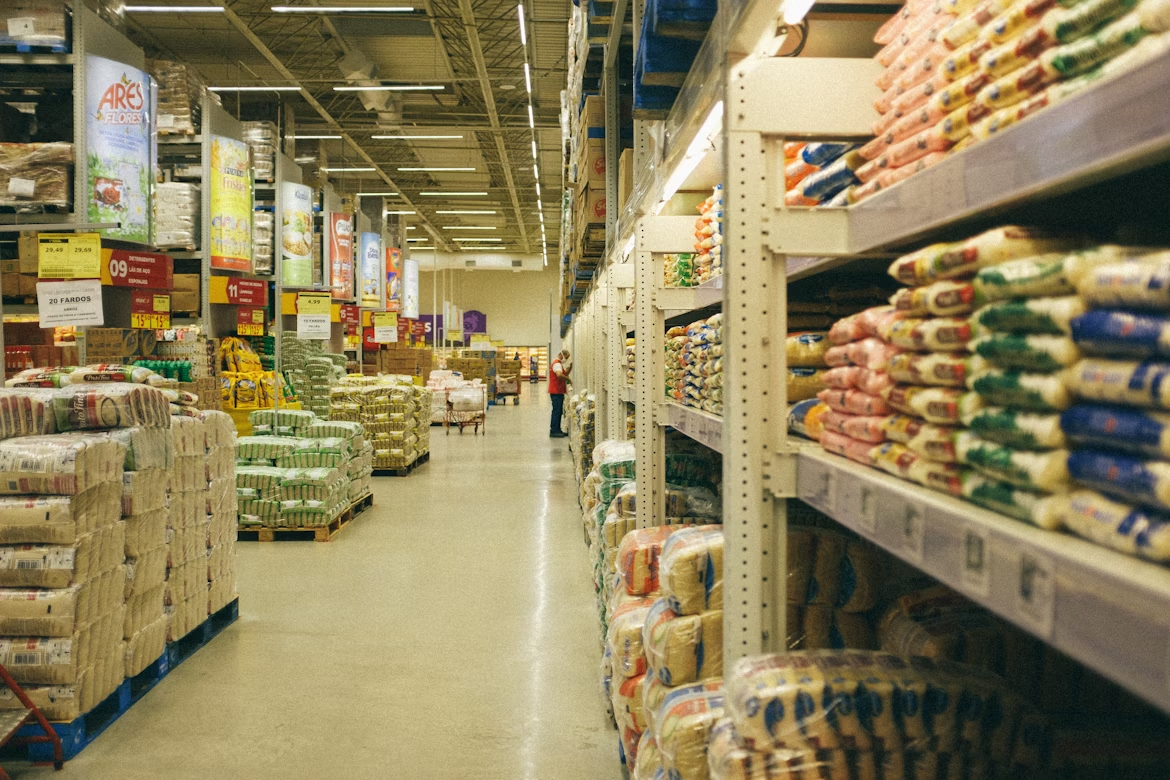An optimised warehouse layout is the backbone of efficient logistics, enabling faster picking times, improved inventory accuracy, and safer traffic flow for forklifts and workers. For modern businesses facing tight delivery schedules and rising storage demands, warehouse layout design is no longer a static decision—it’s a dynamic strategy.
The most efficient shelving layout depends on multiple factors: product type, inventory turnover, available space, and operational workflows. From U-shaped flows to narrow aisle configurations, selecting the ideal shelving arrangement requires blending layout science with technology and equipment that streamline movement without compromising safety or accessibility.
Boosting Layout Efficiency With Forklift Compatibility From All Lift Forklifts
To unlock a shelving layout’s full efficiency, you need handling equipment that fits the space and workflow—something All Lift Forklifts understands deeply.
Based in Australia, All Lift Forklifts offers a full spectrum of material handling solutions that complement warehouse shelving strategies. Whether you’re managing narrow aisles, bulk storage, or multi-level racking systems, they provide diesel, electric, and LPG forklifts to match your facility’s unique spatial and operational constraints. Their equipment range supports both high-density and fast-moving layouts by offering compact forklifts for tight turning radii and reach forklifts for elevated racking.
All Lift Forklifts doesn’t just sell machines—they advise on integration. Their expert team evaluates your shelving layout and recommends machinery that ensures minimal disruption, reduced damage risk, and optimal productivity. For example, pairing narrow aisle racking with a stand-up reach forklift from All Lift allows operators to manoeuvre easily in high-density zones without compromising safety. Their onsite maintenance services and rental flexibility also enable growing businesses to adjust layouts without long-term equipment commitments.
In short, a smart warehouse starts with a smart forklift partner—and All Lift Forklifts delivers that with precision and support.
Optimizing aisle widths, rack spacing, and turning radii for All Lift Forklifts enables smooth pallet handling while allowing warehouse trolleys to shuttle picks between zones, cutting travel time and boosting layout efficiency.
Choosing The Right Layout: U-Shaped, I-Shaped, Or L-Shaped Flow
Selecting an optimal shelving layout often begins with the flow of goods, typically categorised into U-shaped, I-shaped, and L-shaped configurations.
U-Shaped Layouts are among the most commonly used for small to mid-sized warehouses. Here, receiving and shipping are on the same side of the building, with storage in the middle. This reduces travel distance and creates a controlled loop for materials to flow through the facility.
I-Shaped Layouts position receiving and shipping on opposite ends, ideal for high-volume operations requiring uninterrupted throughput. It’s efficient for cross-docking but demands precise scheduling and sufficient aisle width to prevent bottlenecks.
L-Shaped Layouts offer a hybrid approach, helpful for corner-lot facilities or warehouses that want to physically separate incoming and outgoing goods to reduce mix-ups.
Each layout must be matched with shelving that suits traffic flow and picking strategy. High-turnover items should be stored near picking zones, while low-frequency stock can go toward the periphery. When paired with dynamic racking systems like carton flow or mobile shelving, these layout types help eliminate wasted steps and improve accuracy.
Narrow Aisle And Very Narrow Aisle Racking For High-Density Storage
If storage capacity is a priority, narrow aisle (NA) and very narrow aisle (VNA) configurations can dramatically increase usable cubic space. These systems reduce aisle width from the standard 3–4 metres to as little as 1.5–2 metres, enabling more racking within the same footprint.
NA and VNA layouts rely on specialised equipment like turret trucks, articulated forklifts, or guided order pickers, which can operate within these confined paths while lifting loads to significant heights. The result is vertical storage optimisation without adding square footage.
However, this efficiency comes with trade-offs: slower travel speeds, potential congestion, and higher forklift costs. That’s why these layouts are best suited for operations with consistent SKUs and planned picking routes. They shine in retail, pharmaceutical, and e-commerce sectors where storage density directly impacts fulfilment timelines.
Pairing these layouts with well-mapped slotting systems (based on pick frequency and product size) ensures the gains in density don’t translate into losses in productivity. Narrow aisle doesn’t mean narrow thinking—it requires strategic planning to work at scale.

Photo by Dennis Siqueira on Unsplash
Zoning Your Warehouse For Efficiency And Safety
Zoning divides a warehouse into functional areas based on activity: receiving, inspection, storage, picking, packing, and shipping. Efficient zoning not only increases productivity but reduces cross-traffic, minimises damage, and improves worker safety.
Start with inbound zones close to dock doors to reduce unloading time. From there, designate separate areas for quality checks, then transition to static shelving or racking for bulk storage. Fast-moving items should be placed in forward picking zones near packing areas to limit travel.
Using colour-coded signage, floor markings, and digital wayfinding tools can help guide forklift operators and pickers alike. Automated solutions like conveyor belts or RFID-tracked pallets streamline movement across zones, ensuring workers stay in their lanes.
Most importantly, layout design should allow for emergency exits, fire aisles, and unobstructed visibility around high-traffic corners. Poor zoning is one of the leading causes of workplace injuries in warehouses. When thoughtfully implemented, zoning contributes not just to operational flow—but also to workforce wellbeing.
Incorporating Dynamic Shelving Systems For Agile Warehousing
Dynamic shelving adapts to shifting inventory demands, making it ideal for warehouses facing seasonal spikes, SKU volatility, or rapid scaling. Unlike static shelving, dynamic options move—whether that’s through gravity-fed carton flow racks, mobile shelving, or robotic shuttles.
Carton Flow Shelving uses sloped roller tracks to move products toward the pick face automatically. It’s ideal for first-in, first-out (FIFO) rotations in food and beverage or healthcare industries.
Mobile Shelving Units, mounted on carriages, slide side-to-side to open access aisles only where needed. This drastically reduces aisle space while still allowing full access to every shelf. Popular in archival, cold storage, and slow-moving item warehouses, mobile systems combine space-saving with versatility.
Robotic Shelving (e.g., shuttle systems) is the pinnacle of layout agility. These allow automated bots to retrieve shelving pods and deliver them directly to picking stations. While costly upfront, they offer unmatched speed and inventory visibility in high-throughput environments.
For many businesses, hybrid systems—static shelving for bulk items, flow racks for high-turnover SKUs, and mobile units for long-tail products—offer the best blend of stability and scalability. The key is integrating them through warehouse management systems (WMS) that allocate items based on turnover rate and handling priority.

Photo by Alberto Rodríguez on Unsplash
Wrapping Up
The most efficient shelving layout isn’t a one-size-fits-all solution—it’s a customised blend of smart design, equipment compatibility, workflow zoning, and agile systems. From the ground-level integration of forklifts provided by All Lift Forklifts to the high-tech simulations offered by warehouse planning software, every aspect plays a role in how smoothly a facility runs.

